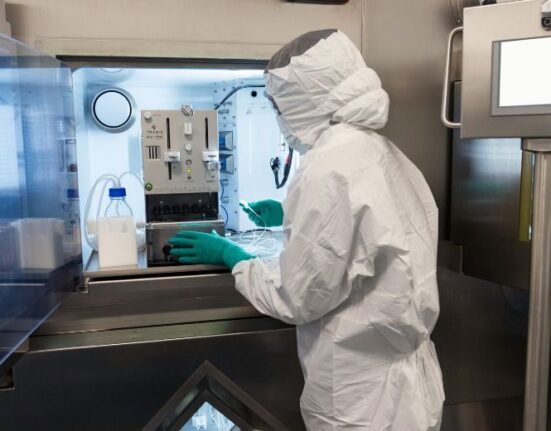HQ Team
May 3, 2023: Researchers at the University of Michigan and the University of British Columbia have developed a new blood thinner compound that is safer and more effective.
The researchers have designed a new compound called MPI 8 that decreases the risk of bleeding—a common side effect of existing blood thinners.
“The development of MPI 8 represents a major breakthrough in the field of blood clot prevention and treatment,” said Dr. Jay Kizhakkedathu, a professor and Canada Research Chair at UBC’s department of pathology and laboratory medicine and the UBC Centre for Blood Research. “By targeting a specific molecule involved in clot formation without disrupting the natural clotting process, we’ve created a blood thinner that has proven safer and more effective in animal models, with enormous potential to improve human lives as well.”
Initial animal trials have offered promising results in the prevention of blood clot and thrombosis. Human trials are awaited to confirm the results’ efficacy.
Blood thinners’ risks
Anticoagulants or blood thinners are a lifesaver for people with heart ailments or at risk of heart attacks or strokes. When left untreated, they can lead to life-threatening conditions such as deep vein thrombosis, heart attack, pulmonary embolism, and stroke. In people with a heart rhythm disorder called atrial fibrillation (Afib), these medicines can reduce the risk of a stroke by 70 percent.
The blood thinners commonly prescribed are heparin, direct oral anticoagulants (DOACs) and warfarin, which target enzymes essential for blood clotting. But one of the dangers of disabling these enzymes is that it upsets the normal clotting process after any injury.
Polyphosphate and MPI8 bonding
The UBC and Michigan scientists decided to take a safer route by targeting a polyphosphate molecule that hastens the clotting process but is not essential for the clotting to take place.
“Our thought was that polyphosphate might be a safer target to go after with an antithrombotic drug, because it would just slow these clotting reactions down—even if we take out 100 per cent of the action of the polyphosphate,” said Dr. Jim Morrissey, a professor of biological chemistry and internal medicine at the University of Michigan. “We really had to come up with an extremely novel way to target it compared to the usual drugs that target clotting, and that’s where the expertise of Dr. Kizhakkedathu’s lab became so important.”
The chosen molecule MPI8 carries “smart” binding groups with positive charges that are drawn to polyphosphate’s negative charge. This MPI8 molecule binds to the polyphosphate and stops its action.
In preclinical studies, MPI 8 demonstrated remarkable effectiveness in preventing blood clots in mice without increasing bleeding risk. The drug showed no signs of toxicity, even at high doses.
Initial animal trials have offered promising results in the prevention of blood clot and thrombosis. Human trials are awaited to confirm the results’ efficacy.
“Not only does the drug show promise as a safer and more effective option for patients, but the design platform we used to create MPI 8 is flexible, potentially allowing for the development of additional compounds with similar properties and efficacy,” said Dr. Chanel La, who worked on the project as a chemistry PhD student in the Kizhakkedathu lab. “Assuming our work continues to produce positive results, I would be very excited to get MPI 8 into an approved clinical trial and bring this drug closer to becoming a reality for patients in need.”
The research paper can be accessed here.








